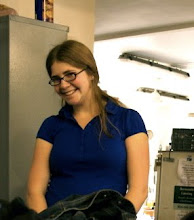There is a popular expression in Israel - אחרי החגים, acharei hachagim - after the holidays. Nothing productive happens during the fall chagim, no plans are made, everything is on pause. "Would love to get coffee with you - acharei hachagim." "I'll definitely write a blog post - acharei hachagim." The title of this blog post is not just a rather lame excuse for not having written since August, but it is a collection of reflections on my 2nd round of fall holidays in Israel.
Yom Kippur
Part of this was written for our "HaEmek D'var" processing groups at school. Over the course of Yom Kippur, actually all contained within the night of Kol Nidre, I had two starkly contrasting Jerusalem experiences. After Kol Nidre services at HUC, I was standing on the balcony of Beit Shmuel with two classmates, looking out over the night view of the Old City. Jerusalem is completely closed on Yom Kippur - no businesses are open, and the only motor traffic are police vehicles. From our view, just a few hundred feet from Jaffa Gate, the city was silent, beautiful, and perfect. It was a moment of incredible peace, undisturbed by the usual noises of traffic that permeate Jerusalem. At moments like these, not only is it easy to love Jerusalem, it is practically impossible not to.
After we tired of that view, Beni, Ricky, and I walked down to Emek Refaim, a street in southern Jerusalem filled with restaurants and shops. On Yom Kippur, of course, all of those were closed. As every synagogue and minyan finished its service, people from all over Jerusalem streamed to Emek Refaim to people watch and shmooze. In Israel, Yom Kippur is also known as Yom haOfanaim - Bicycle Day! With the streets empty of traffic, kids take the opportunity to take over the cities with their bikes. As we watched all of the diversity of am Yisrael walk by in their Yom Kippur whites and on their bicycles, tricycles, skateboards, and Razors, I commented that we had been looking at before was ירושלים של מעלה Yrushalayim shel ma'alah - the heavenly Jerusalem, and what we were looking at now was ירושלים של מטה Yrushalayim shel matah - the earthly Jerusalem. Wasn't this incredible? Isn't this, the community and the am, the people, what it's really about? Beni responded, "Yes, but today, Yom Kippur IS about Yrushalayim shel ma'alah." I'm not sure that we can ever remove Yrushalayim shel matah, the world-as-it-is, from the equation completely, even on Yom Kippur, yet that moment of looking out at the physical representation of Yrushalayim shel ma'alah was a clear reminder of what I want to strive for not only on Yom Kippur.
Simchat Torah
For the second year in a row, I went to Kol Haneshama, a Progressive congregation in Jerusalem, for hakafot (dancing with the Torah) on Erev Simchat Torah. As always, it was a lot of fun, good spirited, plenty of cute children waving the flags they had made in gan. Kol Haneshama has a beautiful custom as part of their Simchat Torah celebration. Generally, the 7 hakafot are loud, with fast circle dancing, singing at the top of your lungs, and getting sweaty and dehydrated. At Kol Haneshama, the first six are like this. For the final hakafah, everyone gets into one large circle in the courtyard outside the building. As the two Torah scrolls are passed around the circle, ensuring that each and every person there has the opportunity to hold a Torah scroll during the hakafot, the community sings slower songs, transitioning and slowing down from the ecstasy of hakafot 1-6. It is a beautiful tradition, because of it last year I started to feel a part of the community rather than an outsider watching others celebrate.
Dvar Torah for Dr. Harlan Daman’s 19th Yahrzeit
2 months ago




No comments:
Post a Comment